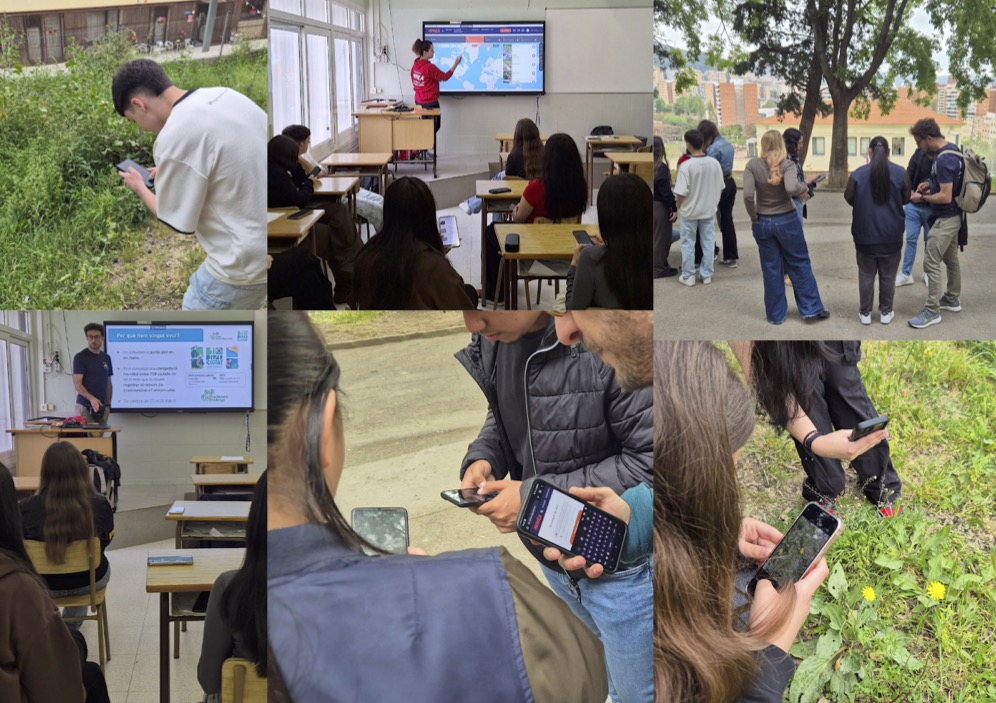
Discovering the wild side of Barcelona
Carlos Rodero
May 28, 2025, 8:03 a.m.
From April 25 to 28, the EMBIMOS research group from the Institut de Ciències del Mar (ICM-CSIC) promoted a new edition of the international bioblitz BioDiverCiutat, the local name of the City Nature Challenge. During these four days, a total of 59 volunteers contributed to the collection of 4,342 observations across 974 different species, actively participating in collaborative biodiversity monitoring through the MINKA platform. The Barcelona Metropolitan Region stood out nationally, registering the highest number of observations and species among all Spanish cities participating in the City Nature Challenge 2025.
Key findings from the BioDiverCiutat 2025
The local event of the international bioblitz led to several remarkable biodiversity findings in the Barcelona region. Notably, 12 marine species were recorded for the first time in the city of Barcelona, concretely in a beach, for example Cephalothrix simula, a ribbon worm previously only observed in Cap de Creus (Costa Brava in the North of Catalonia). A total of 65 non-native or invasive species were also identified, such as the common waxbill (Estrilda astrild), a bird originally kept as a pet that is now increasingly present in urban settings. In addition, 33 protected or threatened species were documented, including Audouin’s gull (Ichthyaetus audouinii) in Castelldefels and the European shag (Gulosus aristotelis) at Bogatell beach in Barcelona.
The challenge also expanded the MINKA platform's biodiversity records with 35 new taxa, comprising 26 species and 9 genera. In terms of participation, Barcelona was the most active municipality of the whole region, followed by Castelldefels and Torrelles de Llobregat.
The full dataset of BioDiverCiutat is now available in MINKA, playing a key role in future research and conservation efforts in the region. More detailed results can also be viewed at biodiverciutat.cat.
Empowering youth and communities through citizen science training
In the days leading up to the bioblitz, several training sessions were held to engage and empower new participants. An online session targeting local environmental organisations was organised to encourage their involvement and show how they could mobilise their communities to take part in the challenge. Another training session was held with two of these interested entities.
These sessions contribute to enhancing digital skills for implementing data acquisition infrastructures by the European Citizen Science (ECS) project, particularly by engaging new practitioners in collaborative developments. The overall objective of this project is to widen and strengthen the European Citizen Science community through capacity-building and awareness-raising activities.
A digital skills workshop was delivered to students from a Barcelona-based high school specialising in environmental and sustainability studies. The training focused on how to use the MINKA platform during their planned biodiversity outing to the Besòs River.
Also, on the first day of the challenge, a group of secondary school students was guided through a field activity to observe and document urban biodiversity, giving them hands-on experience with citizen science tools and the value of environmental monitoring.
About the event
BioDiverCiutat is an initiative that invites citizens to explore and discover the natural richness of urban environments. It forms part of the City Nature Challenge, an international event in which cities around the world compete to report as much urban biodiversity as possible over four days. This initiative highlights the power of citizen engagement and cross-sector collaboration in advancing environmental monitoring and conservation. This event was funded by the European Projects ANERIS, GUARDEN, ECS, and MINKE.